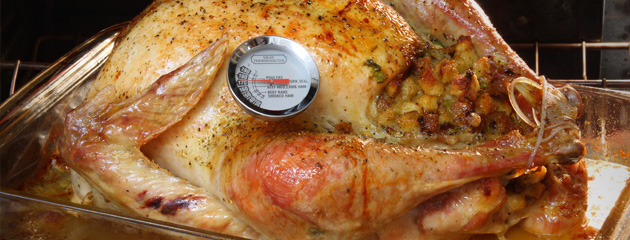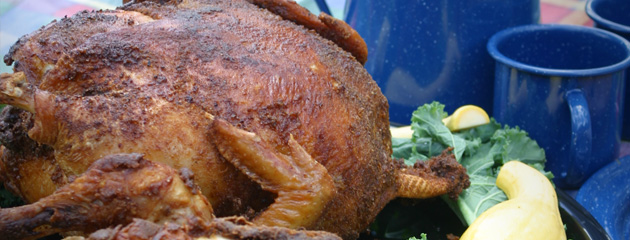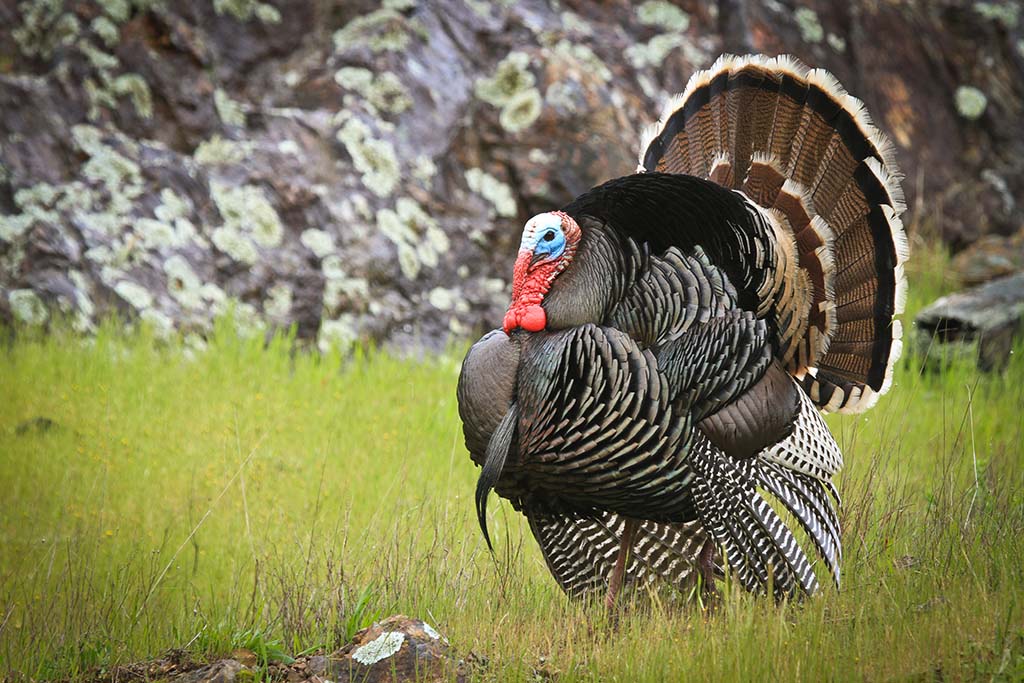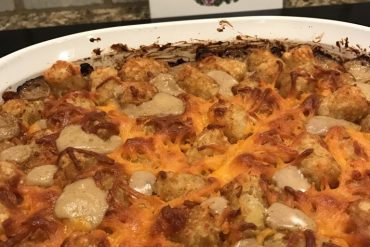This has to be my favorite time of year. Fall weather is in full swing, hunting season is open and it’s time to gather friends and family to celebrate Thanksgiving! Is this year a Butterball year or did you bag your own bird for the table? In case you’re one of the lucky ones who are getting the chance to go directly from field to table this holiday season, we wanted to share a couple of our favorite recipes that are sure to do your bird justice.
Did you know that the age of your bird plays into how it should be prepared? Older birds (2+ years) can end up dry and tough if they are not cooked with a slow, moist heat. Younger birds are not as nearly as tough and can be prepared on the grill or in a backyard fryer. If you are not sure what method will be best for your bird check out this helpful guide from the folks at the MO Department of Natural Resources.
Once you decide the best way to cook your turkey you’ll need to find a recipe. We’ll we’ve got you covered! Who better to recommend some great wild turkey recipes than the team over at the National Wild Turkey Foundation. Here are two of our favorites!
Five Steps to a Perfectly Roasted Turkey – NWTF

Get the perfect roasted turkey in five simple steps!
- Place the turkey breast side up on a rack in a shallow roasting pan. Do not add water.
- Before placing the turkey in the oven, you may want to brush it with cooking oil, melted butter or margarine, although it’s not necessary. (Check out the Roasted Turkey recipe below)
- Cover the turkey with a loose tent of heavy-duty aluminum foil to prevent over browning, allow for maximum heat circulation and keep the turkey moist. To make a tent, tear off a sheet of foil 5 to 10 inches longer than the turkey. Crease the foil crosswise through the center and place over the turkey, crimping loosely onto the sides of the pan to hold it in place.
- Roast according to the following chart.
- To brown the turkey, remove the foil tent 20 to 30 minutes before roasting is finished, and continue cooking until the meat thermometer reaches 185 F.
FYI: Basting usually is not necessary during roasting since it cannot penetrate the turkey’s skin. Also, frequently opening the oven door prolongs cooking time.
FYI: When using a meat thermometer, insert it through the foil into the thickest part of the thigh muscle without touching bone. The inner thigh is the area that heats the slowest. For other parts of the turkey, insert the thermometer in the thickest area.
Roasting Chart
The following times are based on an oven preheated to 325 F. Use shorter cooking times for wild turkey so it doesn’t dry out.
Weight (pounds) Unstuffed (hours) *Stuffed (hours)
4 to 6 (breasts) 1½ to 2¼ —–
6 to 8 2¼ to 3¼ 3 to 3¼
8 to 12 3 to 4 3½ to 4½
12 to 16 3½ to 4½ 4½ to 5½
16 to 20 4 to 5 5½ to 6½
20 to 24 4½ to 5½ 6½ to 7
24 to 28 5 to 6½ 7 to 8½
Drumsticks, quarters, thighs 2 to 3½ —–
* Do not partially roast a stuffed turkey one day and complete roasting it the next. Interrupted cooking enhances the possibility of bacterial growth. Yuck.
Deep Fried Wild Turkey – NWTF

Get the best deep fried turkey with these directions and tips!
Ingredients
- 3 to 5 gallons peanut oil
- 1 whole wild turkey, cleaned
- seasonings of your choice (injectable and dry rubs work)
Directions
Heat oil to 300 F to 350 F. Rub the turkey with seasonings and inject with further seasonings, if desired. Hook a wire coat hanger around each of the drumsticks and carefully lower turkey into oil. Cook for 3½ to 4½ minutes per pound or until a meat thermometer inserted into the white meat registers 180 F. Turkey tends to float when cooked through. Remove the turkey from the oil and drain well. Wrap in foil to keep warm. Let stand at least 20 minutes before carving. Serves 10, depending on the size of the bird.
FYI: A plump, juicy turkey may be the traditional Thanksgiving meal centerpiece, but you can always celebrate the bird any time of year by deep frying it to perfection. A Valentine’s Day turkey? Sounds good to us!
A few more deep fried turkey tips…
- Make sure the turkey is thawed completely.
- Clean the turkey in the same manner you would for roasting.
- Do not stuff the turkey when deep frying.
- To determine how much oil to use in a deep fryer, fill the pot with water and lower the turkey into it. The water should cover the turkey without spilling over. Remove the turkey and measure the amount of water left in the pot. Discard the water and fill the pot with oil.
- Dry the turkey thoroughly before lowering it into the oil.
- Heat the oil to at least 310 F before adding the turkey.
- Skinless turkey should be cooked 3 minutes per pound, while turkey with its skin should be cooked 3½ minutes per pound.
What are you waiting for? Cancel that Butterball turkey order and go bag yourself a wild bird! Remember, the most important thing is the journey from field to table and enjoying the holiday with friends and family.
From our family to yours – Happy Thanksgiving!
About Fin & Field
Fin & Field is all about finding your next great adventure. We’re working hard to provide the most comprehensive listing of services, reviews, and far reaching community available to help you take the guesswork out of planning your next adventure.
We believe in the ethical pursuit of hunting and fishing adventures and support taking from the land only what you can use and leaving it in better shape than you found it.
Tight Lines & Happy Hunting!
Visit us at www.finandfield.com





